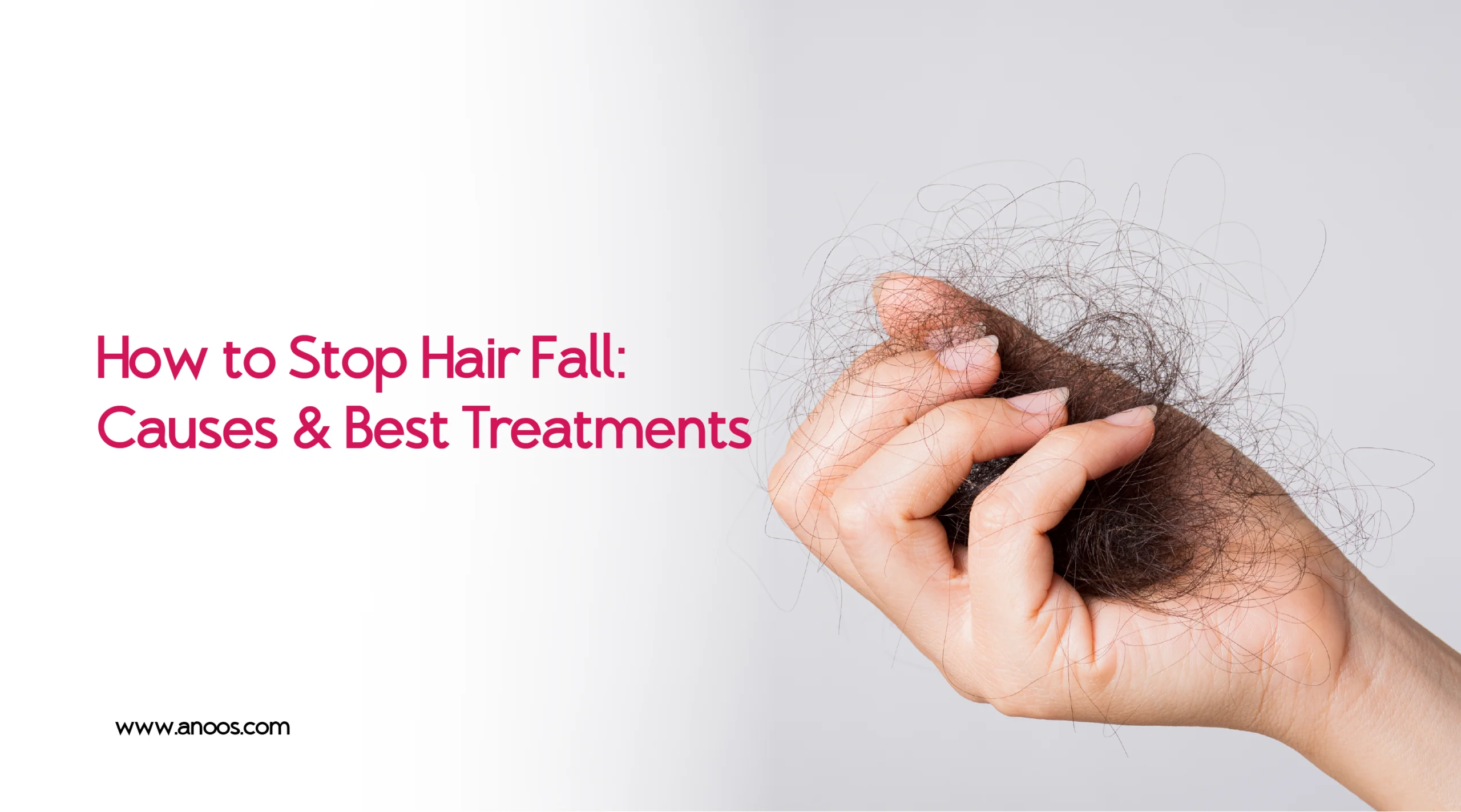
How to Stop Hair Fall: Causes & Best Treatments
Noticing more strands of hair (hair fall) on your pillow or in the shower drain? You are not alone. Nearly everyone experiences some level of hair loss at some point, and it can be frustrating—particularly when you don’t know what’s causing it or how to prevent it.
But here is the good part; most of the hair fall issues are preventable, treatable, and even reversible if they are diagnosed early.
Let’s delve into the how to stop hair fall, root causes of hair loss and the effective strategies to manage it—from personal habits to professional clinical treatments.
First, What’s Causing All That Hair Fall?
Hair fall is not an overnight phenomenon. Following are some of the major reasons:
1. Genetic Factors
Yes, it runs in the family! If your parents had hair thinning or baldness, it could be hereditary. This is called Androgenetic Alopecia, and it’s super common.
2. Hormonal Imbalance
Hormonal changes due to conditions like pregnancy, menopause, PCOS, or thyroid imbalance can give rise to rapid hair loss.
3. Lack of Nutrients
Your hair needs good food too! Low levels of iron, vitamin D, B12, or protein can weaken strands and slow down growth.
4. Stress, Sleep & Lifestyle
Do you always feel stressed or sleepless? Then, the problem may reflect on your scalp. Telogen Effluvium is a temporary type of hair loss that can be induced by stress or significant physiological upheavals (such as illness or surgery).
5. Styling & Harsh Products
Excessive hair coloring, heat styling, and chemical treatments are injurious to the hair roots and cause breakage. Suggestions of tight ponytails can even lead to hair loss over time.
6. Scalp Conditions
Dandruff, fungal infections, or an unclean scalp can all clog the hair follicles, inhibit blood circulation, and eventually result in hair loss.
So, How to Stop Hair Fall?
Hair fall, be it mild or severe, can often be mitigated or even reversed with an appropriate blend of caretaking, nutritional support, and clinical intervention.
Start With These Easy Lifestyle Fixes:
- Eat Well – Include foods that are rich in proteins, such as eggs, lentils, leafy green vegetables, and nuts.
- Oiling Regularly – Natural oils, such as coconut oil, castor oil, and rosemary oil, enhance circulation on the scalp.
- Use Gentle Products – Opt for sulphate-free shampoos and refrain from using harsh styling tools.
- Manage Stress – Deep breathing exercises, yoga, or even a simple walk can do wonders.
Looking for More Effective Results? Try These Clinical Treatments:
If home care isn’t enough, then it’s perfectly fine to seek a little professional assistance. These advanced treatments have been promising in the following cases:
1. PRP (Platelet-Rich Plasma) Therapy
A widely used, non-invasive procedure that involves injecting your blood plasma into the scalp to stimulate hair growth and strengthen the hair follicles.
2. GFC Therapy (Growth Factor Concentrate)
A more advanced version of PRP that uses concentrated growth factors from your blood to stimulate inactive hair follicles.
3. Microneedling for Hair Regrowth
Microneedling involves the use of a device with very fine needles that create microinjuries on the scalp. This process stimulates collagen production and also increases the permeation of serums or PRP, thereby promoting healthier and stronger hair regrowth.
4. Mesotherapy
Small injections containing hair-promoting nutrients are directly injected into your scalp—ideal for dealing with hair loss resulting from poor circulation or nutrient deficiency.
5. Low-Level Laser Therapy (LLLT)
This non-invasive red light therapy promotes circulation in the scalp and stimulates dormant hair follicles to initiate new growth.
Frequently Asked Questions (FAQs)
Q1. How much hair fall is normal per day?
It is normal to lose 50–100 strands in a day. However, if you notice significant thinning or patches of hair loss, it’s time to see a doctor.
Q2. Can hair grow back after falling out?
Yes, in most cases—especially when the underlying problem is diagnosed early and treated appropriately. Treatments such as PRP, Mesotherapy, and maintaining a good lifestyle contribute to the regeneration of lost hair.
Q3. How long do clinical treatments take to show results?
It varies! Most people see visible changes in 3 to 6 months, but consistency is key. Your hair grows in cycles, so be patient.
Q4. Is it safe to undergo PRP or laser therapy?
Yes! When administered by licensed professionals, these treatments are safe, minimally invasive, and FDA-approved for the regrowth of hair.
Conclusion
A healthy scalp is the base for good, beautiful, strong hair. It can be achieved by following the right hair care tips, using the correct products, and making small changes in lifestyle; therefore, goodbye flakes and hello comfort on the scalp!
Remember that consistency is the key. The earlier you start taking care of your scalp, the faster you will see results.

